Abstract
The influence of a H2-utilizing organism, Vibrio succinogenes, on the fermentation of limiting amounts of glucose by a carbohydrate-fermenting, H2-producing organism, Ruminococcus albus, was studied in continuous cultures. Growth of V. succinogenes depended on the production of H2 from glucose by R. albus. V. succinogenes used the H2 produced by R. albus to obtain energy for growth by reducing fumarate in the medium. Fumarate was not metabolized by R. albus alone. The only products detected in continuous cultures of R. albus alone were acetate, ethanol, and H2. CO2 was not measured. The only products detected in the mixed cultures were acetate and succinate. No free H2 was produced. No formate or any other volatile fatty acid, no succinate or other dicarboxylic acids, lactate, alcohols other than ethanol, pyruvate, or other keto-acids, acetoin, or diacetyl were detected in cultures of R. albus alone or in mixed cultures. The moles of product per 100 mol of glucose fermented were approximately 69 for ethanol, 74 for acetate, 237 for H2 for R. albus alone and 147 for acetate and 384 for succinate for the mixed culture. Each mole of succinate is equivalent to the production of 1 mol of H2 by R. albus. Thus, in the mixed cultures, ethanol production by R. albus is eliminated with a corresponding increase in acetate and H2 formation. The mixed-culture pattern is consistent with the hypothesis that nicotinamide adenine dinucleotide (reduced form), formed during glycolysis by R. albus, is reoxidized during ethanol formation when R. albus is grown alone and is reoxidized by conversion to nicotinamide adenine dinucleotide and H2 when R. albus is grown with V. succinogenes. The ecological significance of this interspecies transfer of H2 gas and the theoretical basis for its causing changes in fermentation patterns of R. albus are discussed.
Full text
PDF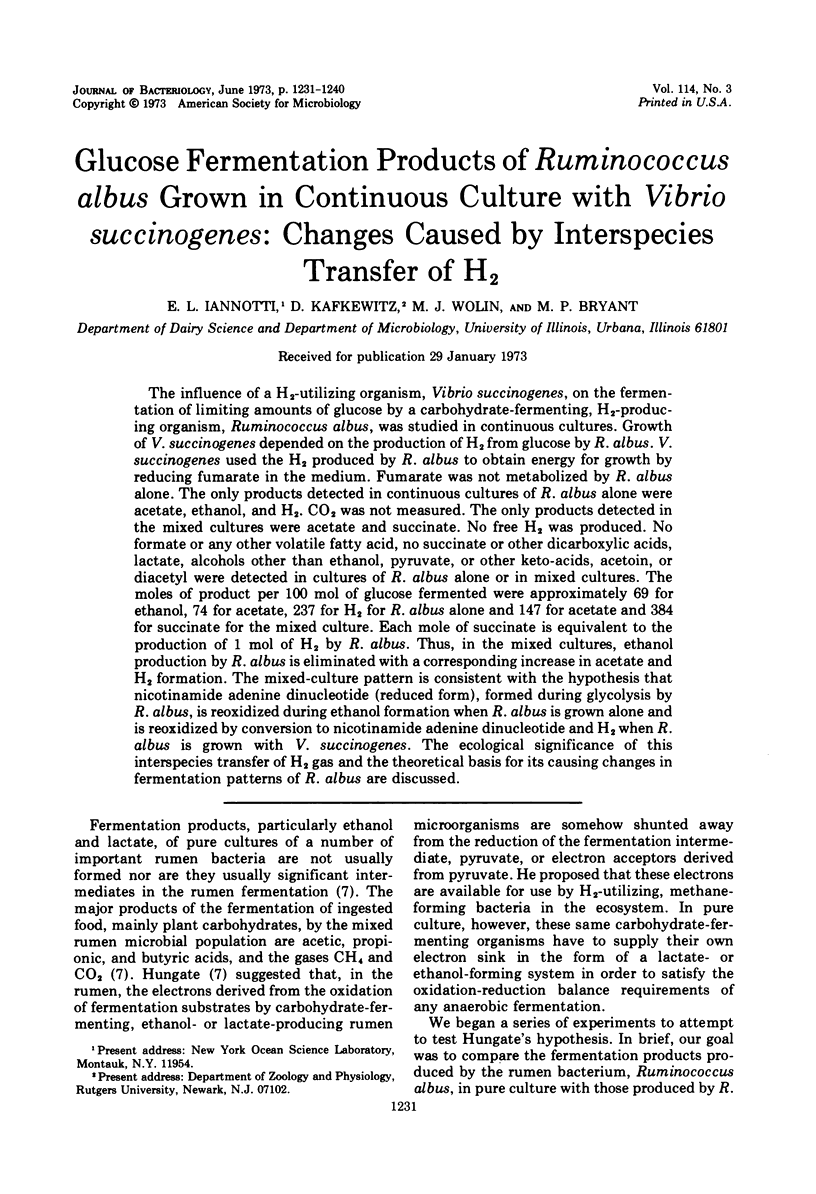
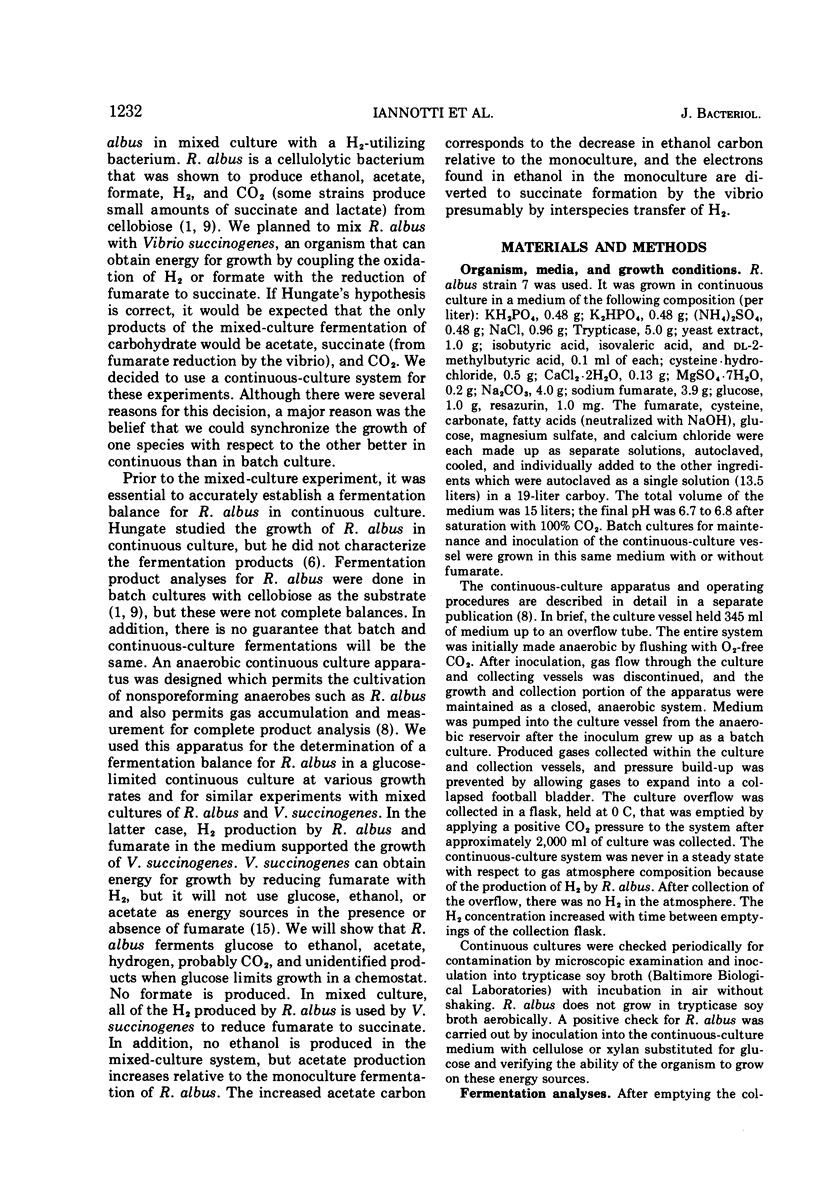
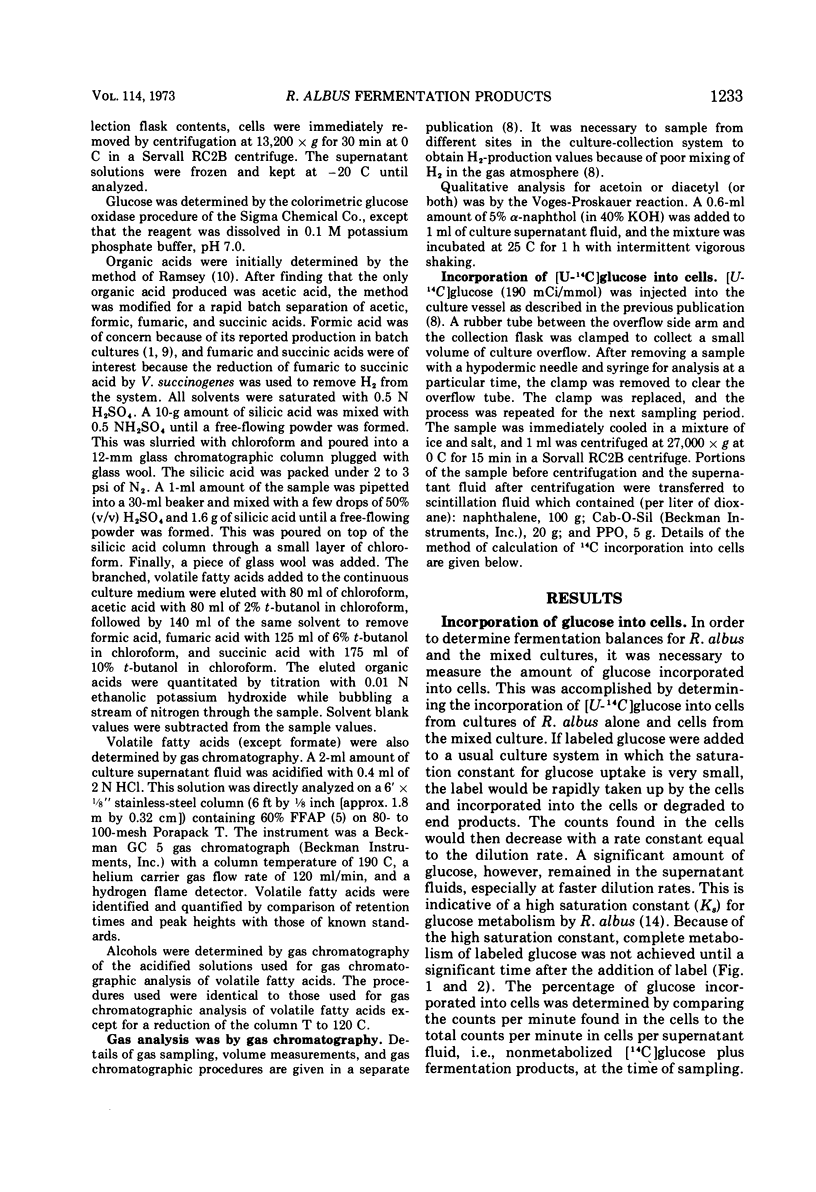
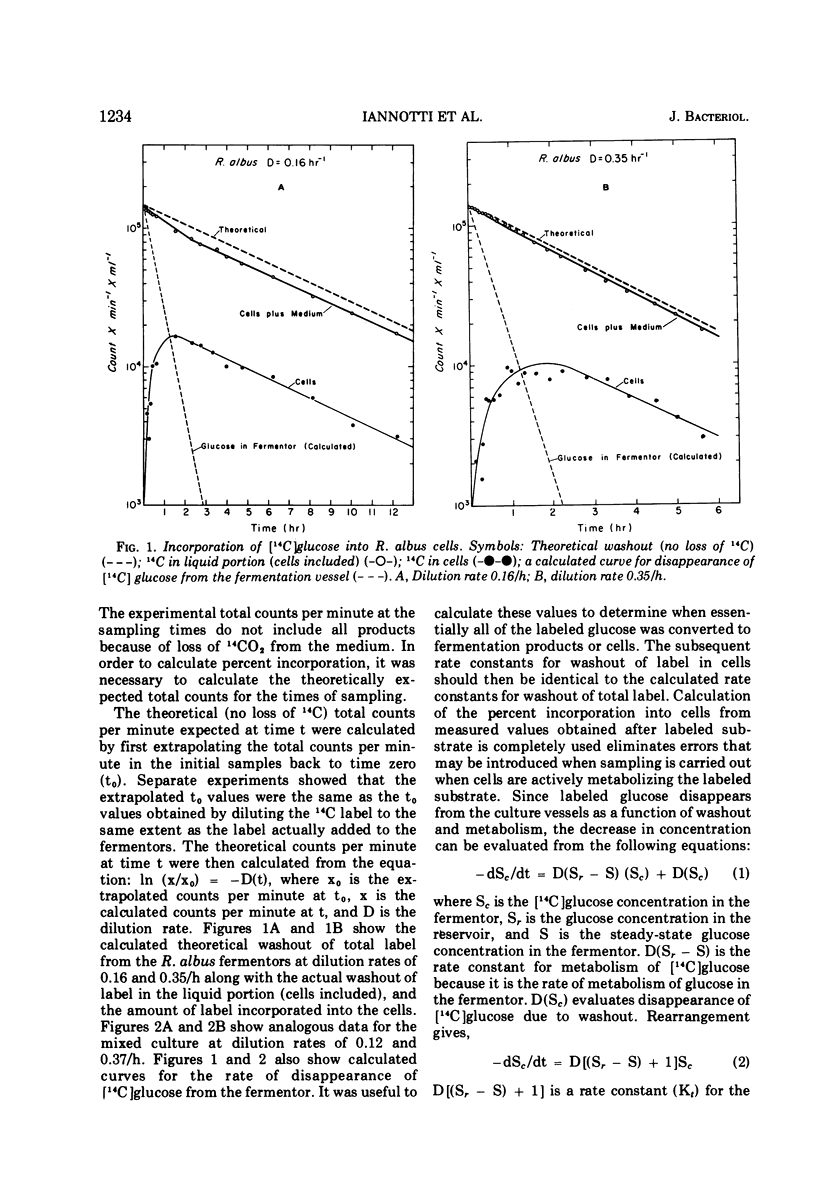
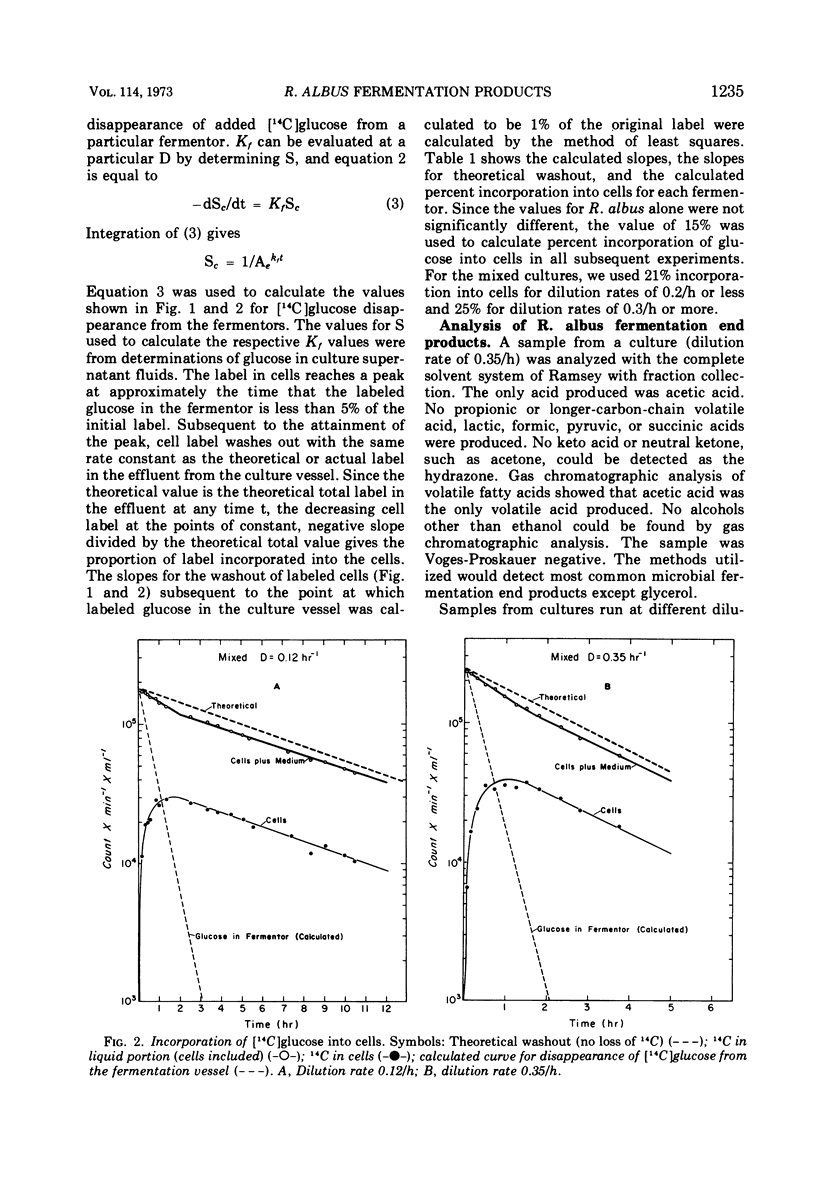
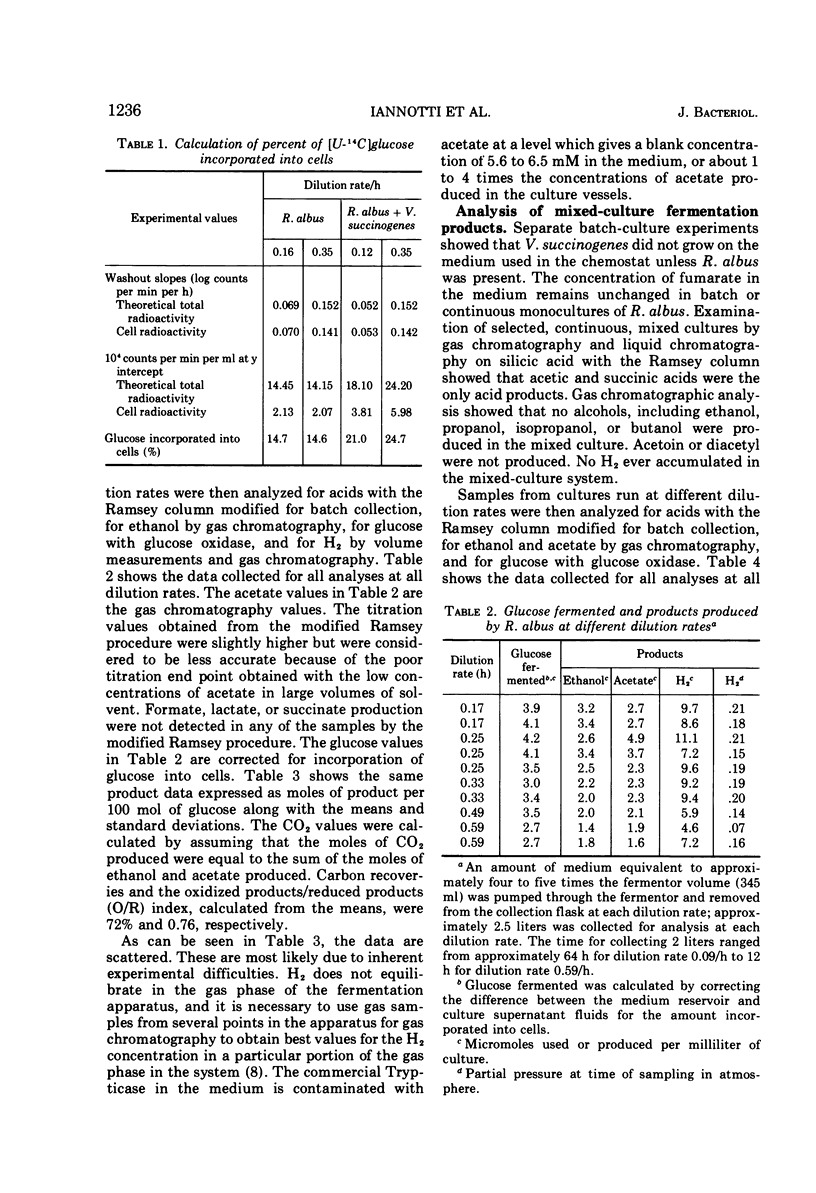
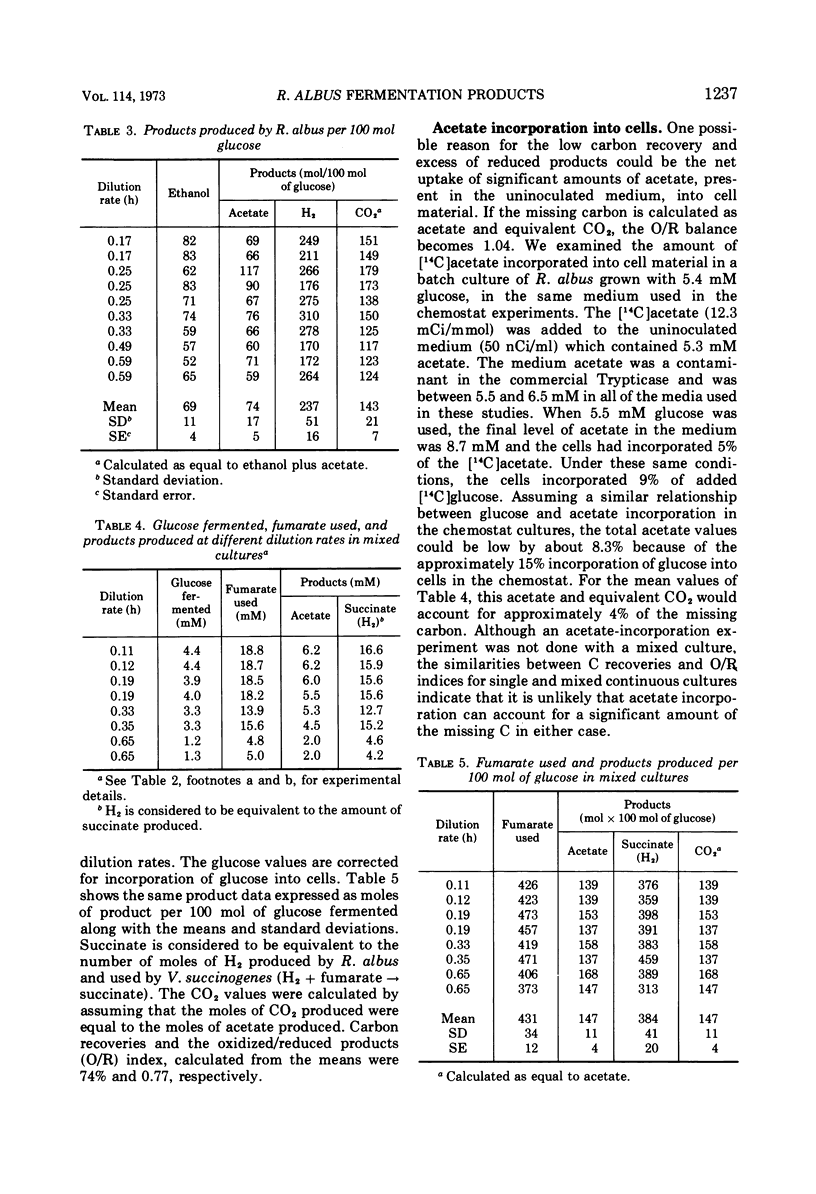
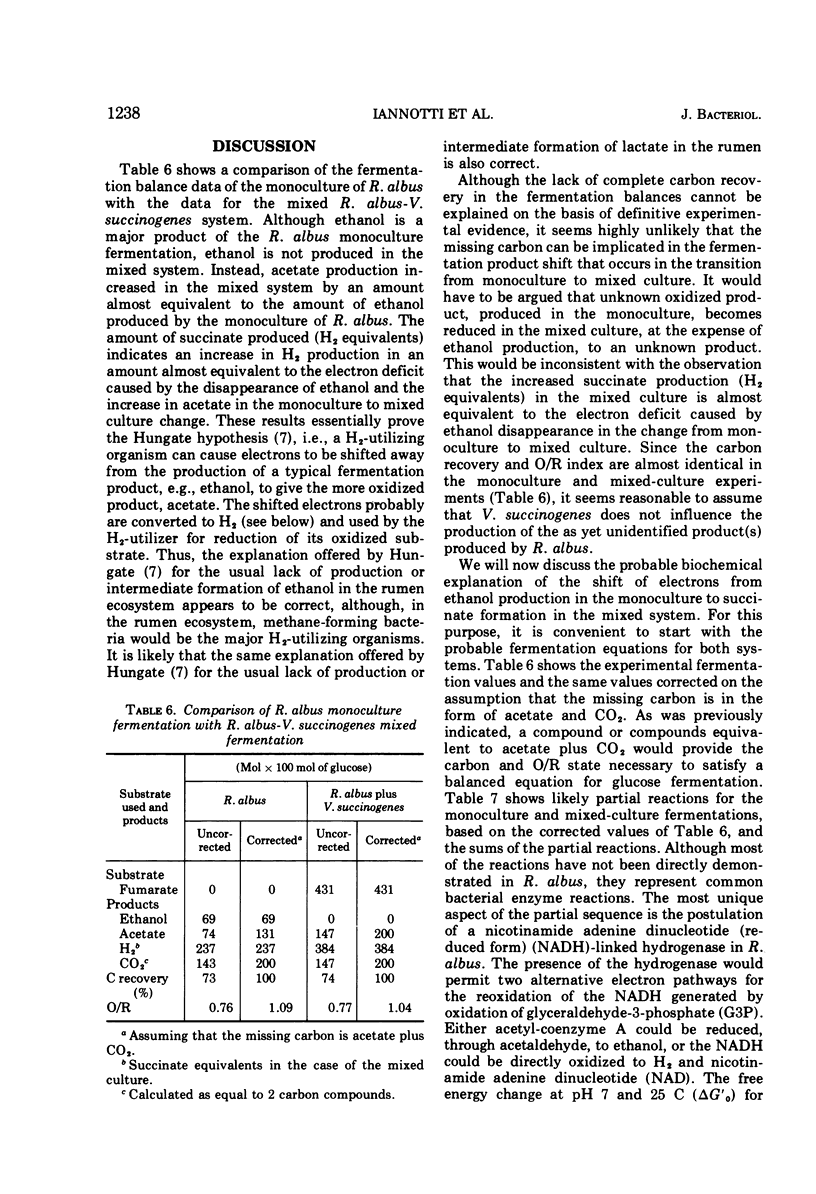
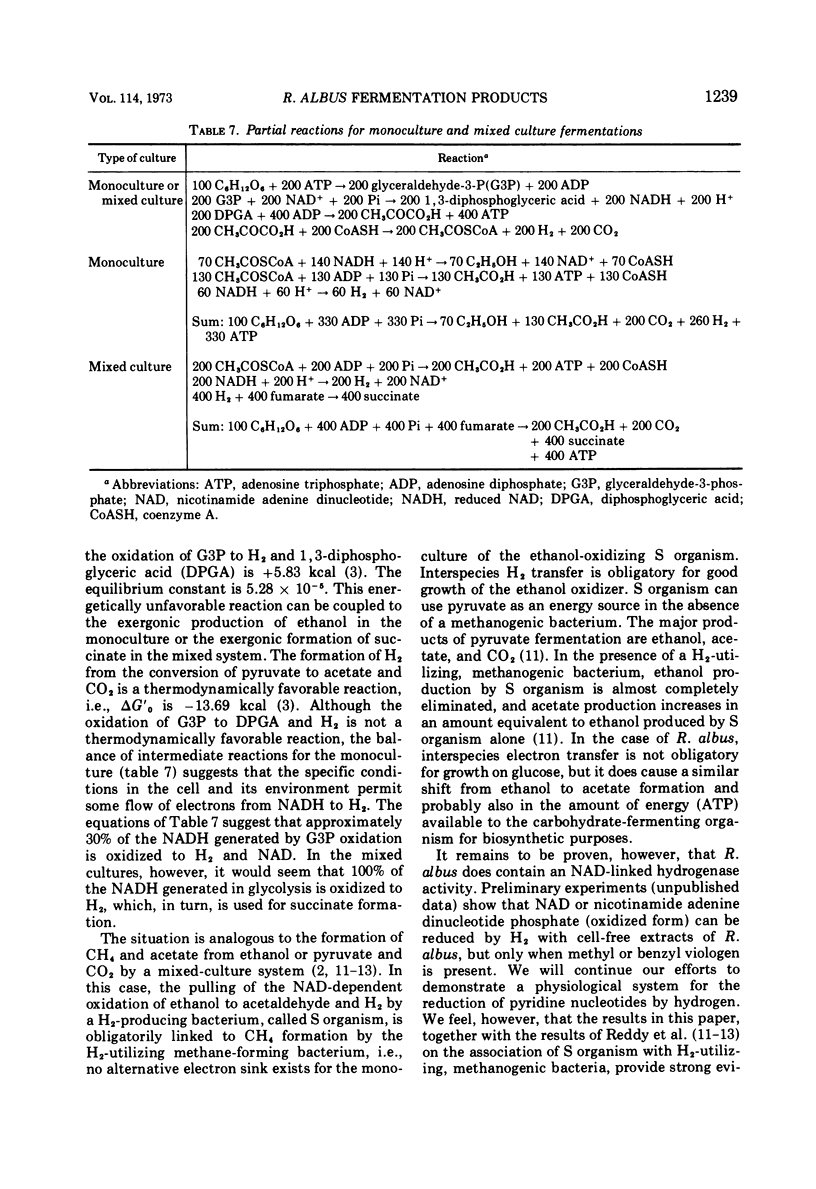
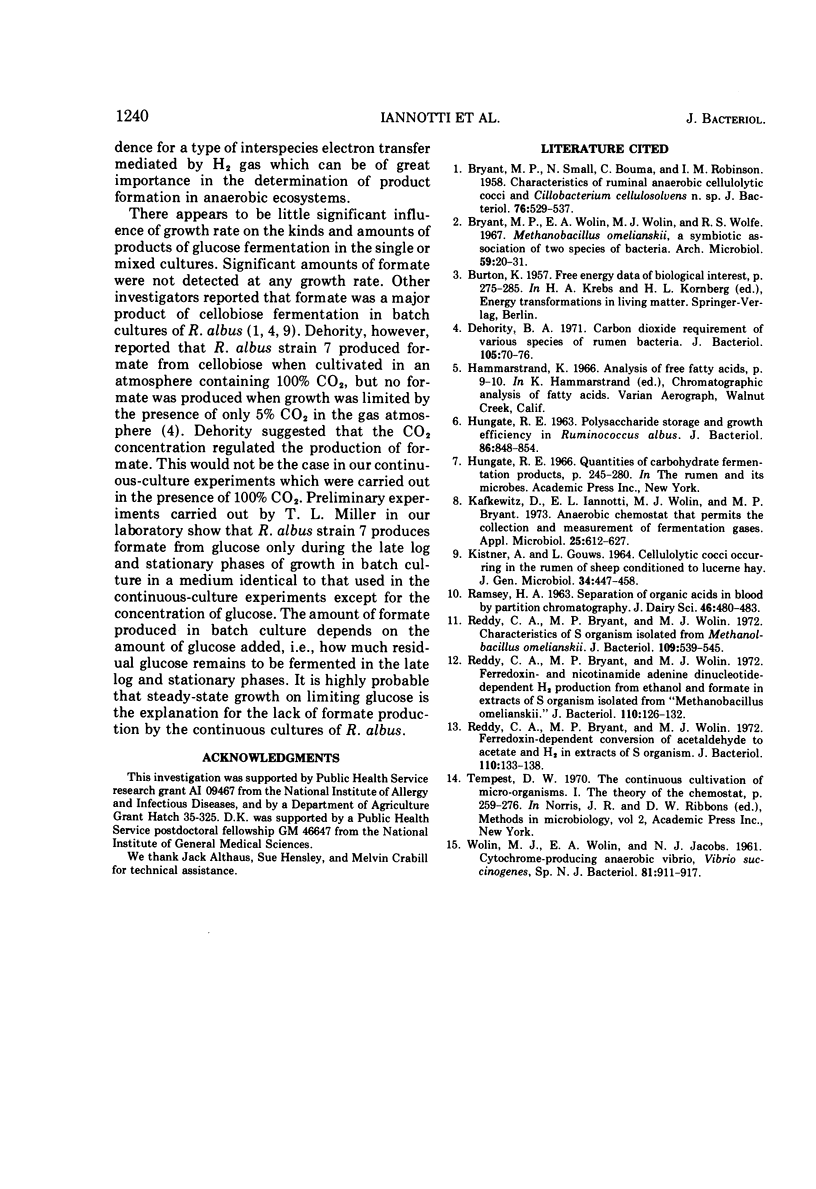
Selected References
These references are in PubMed. This may not be the complete list of references from this article.
- BRYANT M. P., SMALL N., BOUMA C., ROBINSON I. M. Characteristics of ruminal anaerobic celluloytic cocci and Cillobacterium cellulosolvens n. sp. J Bacteriol. 1958 Nov;76(5):529–537. doi: 10.1128/jb.76.5.529-537.1958. [DOI] [PMC free article] [PubMed] [Google Scholar]
- Bryant M. P., Wolin E. A., Wolin M. J., Wolfe R. S. Methanobacillus omelianskii, a symbiotic association of two species of bacteria. Arch Mikrobiol. 1967;59(1):20–31. doi: 10.1007/BF00406313. [DOI] [PubMed] [Google Scholar]
- Dehority B. A. Carbon dioxide requirement of various species of rumen bacteria. J Bacteriol. 1971 Jan;105(1):70–76. doi: 10.1128/jb.105.1.70-76.1971. [DOI] [PMC free article] [PubMed] [Google Scholar]
- HUNGATE R. E. POLYSACCHARIDE STORAGE AND GROWTH EFFICIENCY IN RUMINOCOCCUS ALBUS. J Bacteriol. 1963 Oct;86:848–854. doi: 10.1128/jb.86.4.848-854.1963. [DOI] [PMC free article] [PubMed] [Google Scholar]
- KISTNER A., GOUWS L. CELLULOLYTIC COCCI OCCURRING IN THE RUMEN OF SHEEP CONDITIONED TO LUCERNE HAY. J Gen Microbiol. 1964 Mar;34:447–458. doi: 10.1099/00221287-34-3-447. [DOI] [PubMed] [Google Scholar]
- Kafkewitz D., Iannotti E. L., Wolin M. J., Bryant M. P. An anaerobic chemostat that permits the collection and measurement of fermentation gases. Appl Microbiol. 1973 Apr;25(4):612–614. doi: 10.1128/am.25.4.612-614.1973. [DOI] [PMC free article] [PubMed] [Google Scholar]
- Reddy C. A., Bryant M. P., Wolin M. J. Characteristics of S organism isolated from Methanobacillus omelianskii. J Bacteriol. 1972 Feb;109(2):539–545. doi: 10.1128/jb.109.2.539-545.1972. [DOI] [PMC free article] [PubMed] [Google Scholar]
- Reddy C. A., Bryant M. P., Wolin M. J. Ferredoxin- and nicotinamide adenine dinucleotide-dependent H 2 production from ethanol and formate in extracts of S organism isolated from "Methanobacillus omelianskii". J Bacteriol. 1972 Apr;110(1):126–132. doi: 10.1128/jb.110.1.126-132.1972. [DOI] [PMC free article] [PubMed] [Google Scholar]
- Reddy C. A., Bryant M. P., Wolin M. J. Ferredoxin-dependent conversion of acetaldehyde to acetate and H 2 in extracts of S organism. J Bacteriol. 1972 Apr;110(1):133–138. doi: 10.1128/jb.110.1.133-138.1972. [DOI] [PMC free article] [PubMed] [Google Scholar]
- WOLIN M. J., WOLIN E. A., JACOBS N. J. Cytochrome-producing anaerobic Vibrio succinogenes, sp. n. J Bacteriol. 1961 Jun;81:911–917. doi: 10.1128/jb.81.6.911-917.1961. [DOI] [PMC free article] [PubMed] [Google Scholar]


